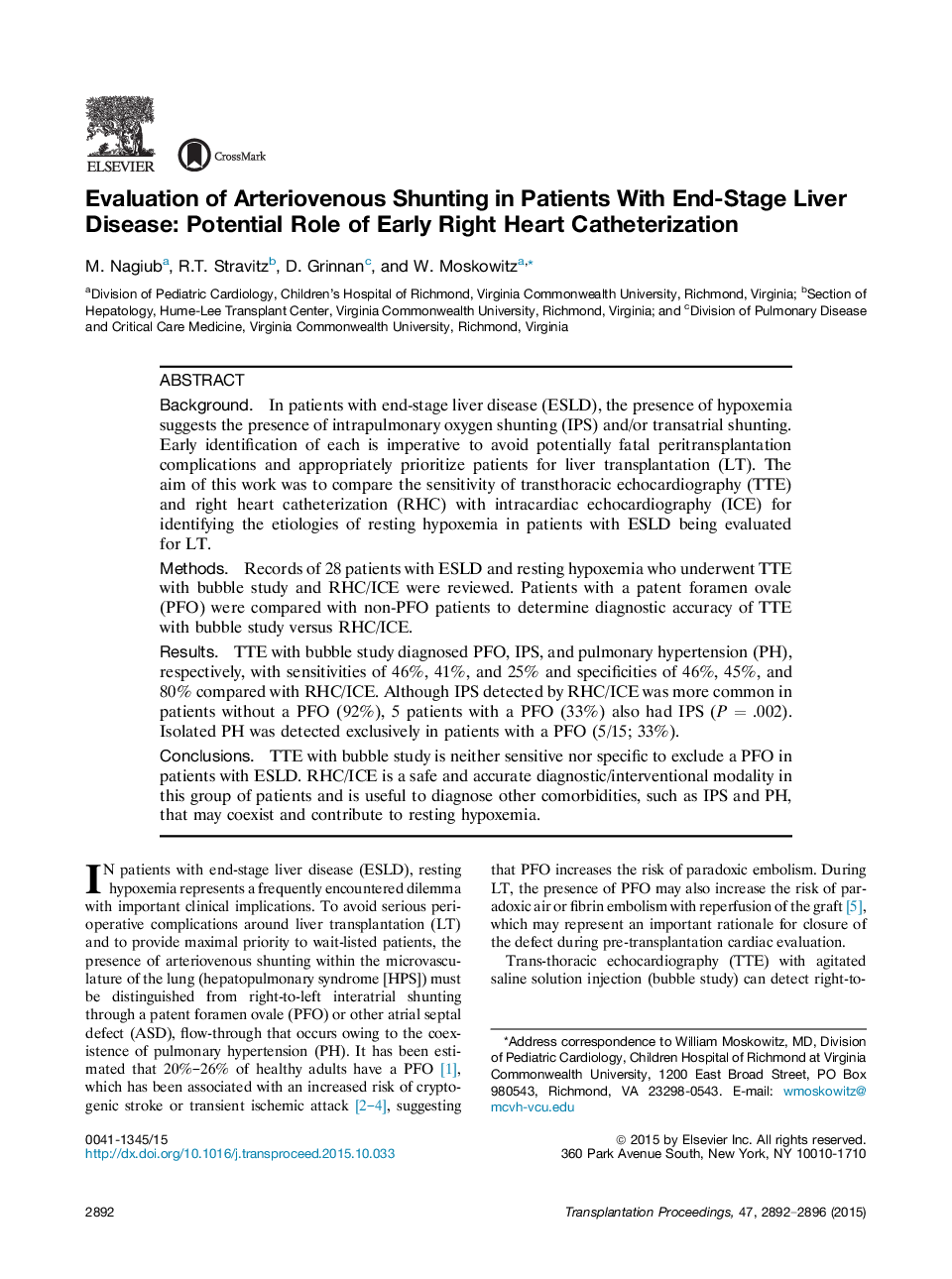| کد مقاله | کد نشریه | سال انتشار | مقاله انگلیسی | نسخه تمام متن |
|---|---|---|---|---|
| 4255840 | 1284500 | 2015 | 5 صفحه PDF | دانلود رایگان |
• TTE with bubble study is neither sensitive nor specific to exclude a PFO in patients with ESLD.
• RHC/ICE is a safe and accurate diagnostic/interventional modality in this group of patients and is useful to diagnose other comorbidies, such as IPS and PH, that may coexist and contribute to resting hypoxemia.
BackgroundIn patients with end-stage liver disease (ESLD), the presence of hypoxemia suggests the presence of intrapulmonary oxygen shunting (IPS) and/or transatrial shunting. Early identification of each is imperative to avoid potentially fatal peritransplantation complications and appropriately prioritize patients for liver transplantation (LT). The aim of this work was to compare the sensitivity of transthoracic echocardiography (TTE) and right heart catheterization (RHC) with intracardiac echocardiography (ICE) for identifying the etiologies of resting hypoxemia in patients with ESLD being evaluated for LT.MethodsRecords of 28 patients with ESLD and resting hypoxemia who underwent TTE with bubble study and RHC/ICE were reviewed. Patients with a patent foramen ovale (PFO) were compared with non-PFO patients to determine diagnostic accuracy of TTE with bubble study versus RHC/ICE.ResultsTTE with bubble study diagnosed PFO, IPS, and pulmonary hypertension (PH), respectively, with sensitivities of 46%, 41%, and 25% and specificities of 46%, 45%, and 80% compared with RHC/ICE. Although IPS detected by RHC/ICE was more common in patients without a PFO (92%), 5 patients with a PFO (33%) also had IPS (P = .002). Isolated PH was detected exclusively in patients with a PFO (5/15; 33%).ConclusionsTTE with bubble study is neither sensitive nor specific to exclude a PFO in patients with ESLD. RHC/ICE is a safe and accurate diagnostic/interventional modality in this group of patients and is useful to diagnose other comorbidities, such as IPS and PH, that may coexist and contribute to resting hypoxemia.
Journal: Transplantation Proceedings - Volume 47, Issue 10, December 2015, Pages 2892–2896
